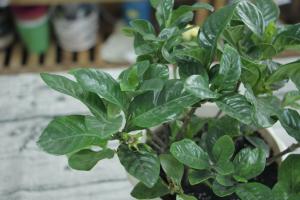1、 Curing method
1. Temperature: Sweet Pepper likes a warm growth environment. High temperature and cold will have a certain impact on it. The normal growth temperature is 22 degrees to 30 degrees. You can't spend the winter outdoors in winter. Keep warm, otherwise it's easy to get frostbite. The temperature at night shall also be controlled between 16 and 20 degrees as far as possible to ensure that it will not be frostbitten by frost

2. Watering: sweet pepper is not resistant to flood and drought, so the amount of watering should be strictly controlled. In summer, the dry and wet condition of the soil should be observed at any time. Water should be added almost once a day. In winter, it is OK to wait until the soil becomes dry

3. Light: sweet pepper has no great requirements for light. Warm sunshine is the most suitable. Sweet pepper belongs to short sunshine plants. In summer, it can't be irradiated by strong light and can't accept full-time light. If the light is not enough, the meat quality of the fruit will become thinner, so pay attention to the appropriate light time

4. Fertilization: it belongs to fertilizer loving plants. Fertile soil can make the branches and leaves of plants grow thicker and greener. Nitrogen, phosphorus and potassium fertilizers can be combined to achieve the purpose of nutrient balance

2、 Breeding skills
1. Breeding: sowing is the main way. Sowing in spring can be carried out from February to April, and sowing in autumn can be carried out from August to October, but the temperature should be kept at 10 ° C to 15 ° C, not lower than 10 ° C, otherwise there will be delayed flowering or slow growth

2. Pruning: the pruning of sweet pepper is very key, because its branching ability is relatively strong. It will grow a lot of side branches in spring, so it is necessary to prune some worthless side branches, so as to ensure that the nutrients of the plant will not be lost and the fruit can be done normally

3、 Problem diagnosis and treatment
1. Disease: black spot occurs in summer. This disease will have some black pits on the fruit, so it needs to use some antibacterial agents in time to control it

2. Insect pests: aphids will occur, which will seriously affect the ripening of fruits. It can be controlled by spraying wettable powder

4、 Other issues
1. Toxicity: no toxicity. It has high nutritional value and can supplement vitamins

2. Whether you can raise it at home: Yes, but you should pay attention to changing the basin often, and pay attention to ventilation and light


 how many times do yo...
how many times do yo... how many planted tre...
how many planted tre... how many pine trees ...
how many pine trees ... how many pecan trees...
how many pecan trees... how many plants comp...
how many plants comp... how many plants can ...
how many plants can ... how many plants and ...
how many plants and ... how many pepper plan...
how many pepper plan...




























